12 top influencer analytics tools to boost your campaign ROI
Table of Contents
It’s no secret influencers have transformed modern marketing. According to our 2024 Influencer Marketing Report, 86% of consumers make a purchase inspired by an influencer at least once a year, and 49% buy things at least once a month thanks to influencer posts.
Influencer marketing helps brands tap into niche audiences, more so than traditional media and advertising. Plus, they can reach highly segmented markets based on influencer demographics and interests. It’s also ideal for brands who can’t afford celebrities to endorse their products but can partner with micro-influencers with a close-knit audience that trusts them.
Successful influencer campaigns need intensive planning and strategy. Influencer analytics tools help you do this by giving you insightful data, and the means, to execute your influencer marketing efforts to get the best results. These tools help you refine your strategy for better results by discovering the right influencers and monitoring and managing campaign performance.
What is an influencer analytics tool?
Influencer analytics tools measure campaign performance and ROI across social media platforms. These influencer marketing tools track metrics like engagement rates, audience demographics, conversion rates, and attribution data to help brands identify high-performing creators and optimize campaign strategies.

Consolidating audience demographics, content performance metrics and profile stats for each influencer helps marketers measure and optimize their influencer partnerships according to overall business objectives.
Which influencer metrics matter most
Stop chasing vanity metrics. Follower counts and likes feel good, but they don’t prove business impact. The metrics that matter depend entirely on your campaign goals.
- Brand awareness campaigns: Focus on reach, impressions, and share of voice to measure how many people see your brand and how often you appear in relevant conversations.
- Conversion campaigns: Track click-through rates, conversion rates from unique links, and attributed sales to measure direct impact on your bottom line.
- Engagement campaigns: Monitor comments, shares, saves, and brand mention sentiment to gauge authentic audience connection.
A powerful influencer analytics tool tracks all of these. A winning strategy prioritizes the ones that align directly with your business objectives.
Top 12 influencer analytics tools to boost your influencer marketing
1. Sprout Social
Sprout Social is an all-in-one social media management platform with powerful influencer analysis capabilities. Sprout Social Influencer Marketing (formerly Tagger) helps you discover niche influencers, analyze content performance and create influencer campaigns that resonate with your audience (and inspire conversions).
With Sprout, streamline end-to-end campaign management and deliver fast, tangible business impact. You can:
- Simplify creator vetting with a Brand Fit Score to help you confidently choose creators who resonate with your brand and drive authentic engagement.
- Use Brand Safety Reports to partner with creators you feel confident align with your brand values.
- Connect with millions of brand and influencer profiles based on their topical alignment with your brand.
- Build data-driven influencer marketing campaigns and improve your social strategy with tailored insights into your target audience’s behavior across social media networks.
- Maximize influencer marketing ROI by monitoring real-time campaign performance and identifying optimization opportunities. Integrate with your favorite tools, from Google Analytics to Facebook Ads Manager, to further measure campaign performance.
- Manage influencer payments in one place with our payment dashboard. See payments made directly to influencers or through integrations like PayPal.

Key features:
- Vetted influencer database across multiple platforms including Instagram, TikTok, YouTube and X (formerly Twitter), with audience demographics and smart filters.
- A data-driven interface designed with clarity in mind, so you easily see the most important data points, like their Brand Fit Score and topics the influencers discuss, when researching creators and influencers.
- AI-powered platform that uses machine learning and audience psychographics to suggest influencers based on interests, audience demographics and more.
- Continuous, always-on safety checks identify and flag potential risks to your brand’s image.
- Centralized platform to manage content approvals, schedule posts and track campaign progress.
- Real-time content and campaign performance metrics including conversion rate and ROI.
- Historical data tracking to analyze an influencer’s past content history, quality and brand alignment. Also, see Follower verification and engagement rate analysis.
- Benchmarking tools offer comparative insights to identify creators with the strongest likelihood of success.
Most importantly, our influencer analytics tool is part of our larger suite of social media solutions. We integrate influencer marketing with social media management, aligning all the components of your larger social media strategy.
Sprout Social’s influencer analytics integrate seamlessly with our broader social media management platform:
- Smart Inbox integration: Manage influencer communications alongside your regular social media messages
- Publishing coordination: Schedule influencer content alongside your organic posts in one calendar
- Listening insights: Use social listening data to identify trending topics for influencer partnerships
- Unified reporting: Compare influencer performance against your organic content in consolidated dashboards
2. Upfluence
Upfluence is an influencer analytics tool that helps you find creators and measure campaign performance. It’s influencer database uses machine learning to choose the best influencers for your brand. You can find influencers, measure engagement rates and content performance and integrate influencer marketing into your broader marketing strategy.
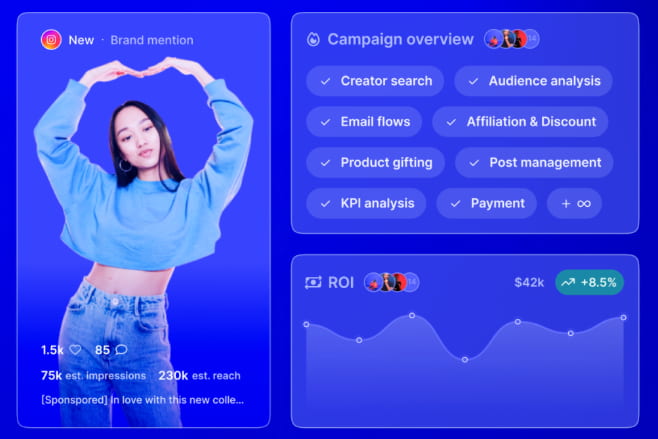
Key features:
- Search and filter influencers based on industry, demographics, engagement metrics and other criteria.
- Access a large database of influencers across multiple platforms.
- Analyze follower authenticity, engagement rates and reach to make informed decisions.
- Manage communications, contracts and collaborations in a unified dashboard.
- Connect with influencers directly via your e-commerce platform.
- Find relevant insights in a custom campaign results dashboard.
3. HypeAuditor
HypeAuditor helps with influencer discovery, audience analysis and campaign tracking. It uses AI to track audience demographics, engagement rates and follower authenticity. The tool’s influencer database is 81 million strong and uses more than 35 metrics for vetting and fraud detection.

Key features:
- Get detailed reports on influencer performance, audience demographics and follower authenticity.
- Find influencers across Instagram, YouTube, TikTok and X.
- Assess audience quality score to check the legitimacy of an influencer’s audience to avoid fake followers.
- Benchmark influencer performance against competitors through competitive analysis.
- Identify suspicious activity or fraudulent engagement in influencer profiles.
4. Emplifi
Emplifi helps users boost reach, engagement and conversions. AI-powered content grades take the guesswork out of understanding individual influencer performance, engagement and brand health. Use this tool to discover top influencers and measure campaign performance.
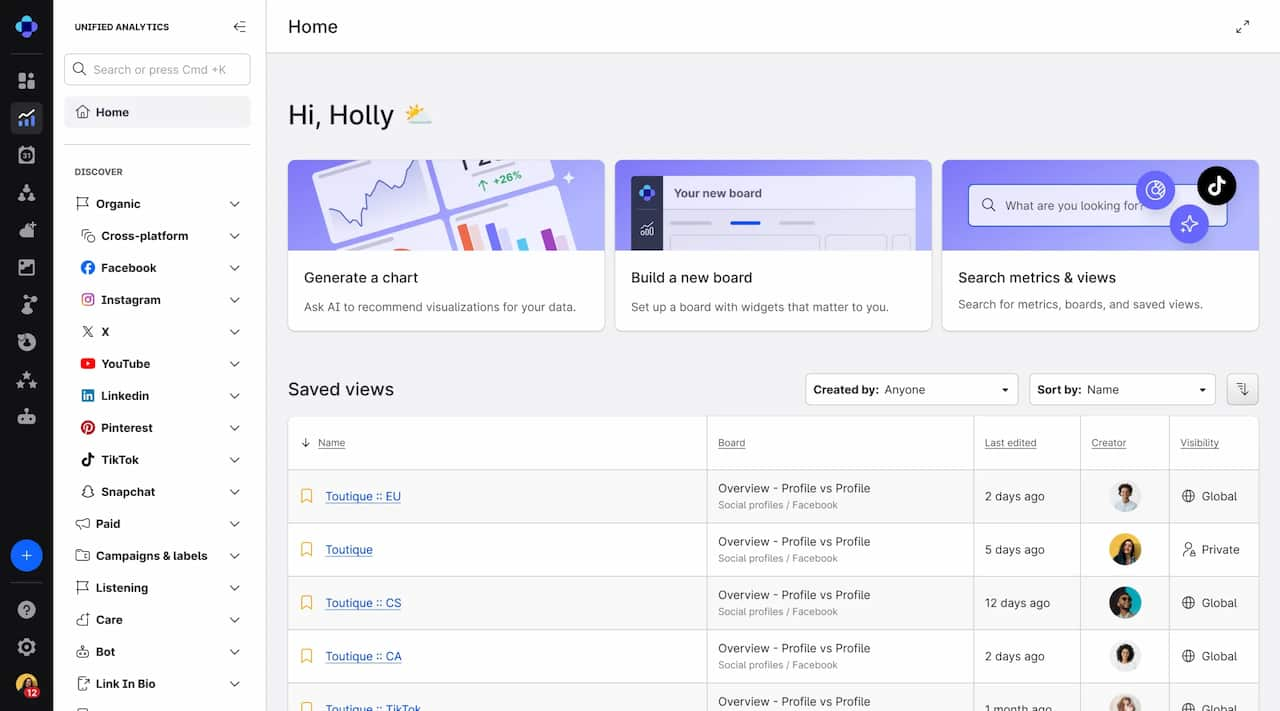
Key features:
- Combine social media management with influencer marketing.
- Find and evaluate influencers across various platforms through in-built discovery and vetting.
- Monitor campaigns in real-time and get reports on influencer performance.
- Get insights into audience demographics and behaviors.
- Track social conversations and trends through social listening.
Still considering Emplifi? Check out our full list of Emplifi alternatives for more information.
5. Grin
Grin has a free Influencer analytics tool designed to help you identify potential influencers for your next campaign. Paste an influencer’s URL in the search bar or use the Chrome extension to check critical performance metrics, including engagement rates, likes, comments, shares and views.
While some platforms like GRIN offer analytics tools, if you’re evaluating the entire GRIN suite or similar platforms, it’s also wise to explore these GRIN alternatives for a complete picture.

Key features:
- Streamline end-to-end campaign management, including discovery, execution and reporting.
- Connect with e-commerce platforms like Shopify to track sales and conversions directly tied to influencer campaigns.
- Use the built-in influencer relationship management (IRM) tool to manage influencer communications and collaborations.
- Get centralized content creation and approval processes.
- Access detailed insights into campaign ROI and performance, including an engagement rate calculator.
6. Creator.co
Creator.co is dedicated to challenger brands and micro-influencers. Find influencers that align with your target audience using this influencer analytics tool’s detailed demographic data and database of 200M+ profiles. Analyze performance with comprehensive reporting for campaign reach, engagement and ROI.

Key features:
- Access numerous creators, categorized by niche and audience.
- Automate influencer outreach, negotiations and content approvals.
- Manage campaigns with micro-influencers for more authentic engagement.
- Manage gifting or product sampling campaigns.
- Monitor and track influencer campaign success with real-time analytics.
7. Promoty
Promoty is an influencer analytics tool that helps you discover influencers with strong brand affinity and analyze campaign performance. Use it to get a detailed profile report for influencers worldwide with data on their follower count, engagement rate, credibility scores, audience demographics, most-used hashtags, brand affinity and interests.

Key features:
- Search influencers by content, location, interests and audience demographics.
- Manage influencer relationships through the in-built tool.
- Organize influencer collaborations, including content approvals and communication.
- Get insights into influencer audience demographics and engagement quality, including credibility scores.
- Get a custom-branded marketplace for influencers to connect with your brand.
8. Keyhole
Keyhole is an influencer analysis tool that helps users measure and improve influencer campaigns with trustworthy analytics data. Use this influencer analytics tool to track influencer activities and campaign performance, and aggregate this data into a comprehensive report.
Key features:
- Monitor influencer engagement and region, including audience demographics.
- Track campaigns, branded hashtags and keywords in real time.
- Get detailed influencer reports on engagement, reach, audience insights and other metrics.
- Measure your brand’s performance against competitors in real time.
- Track the overall sentiment of conversations around your brand and influencers.
9. Traackr
Traackr helps brands find, manage and measure influencer relationships. It offers advanced analytics and insights to optimize campaign performance and build long-term partnerships. You can also collaborate with partner agencies with transparent workflows.
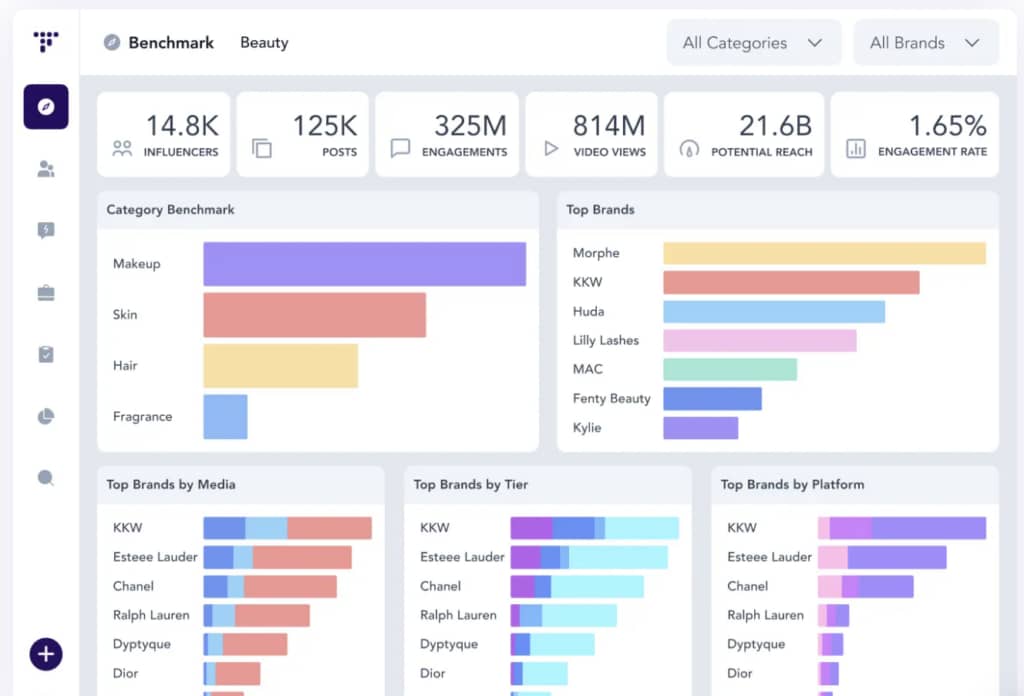
Key features:
- Use advanced search and filtering options to find the right influencers.
- Manage and nurture long-term relationships with influencers through their relationship management tool.
- Manage campaigns seamlessly for streamlined workflows.
- Get insights from performance metrics and ROI tracking.
- Use influencer audience insights to ensure relevance.
10. Aspire
Aspire is an influencer analytics tool that helps you find influencers, manage campaigns and track performance. Brands can collaborate with influencers and measure the impact of their campaigns to optimize them accordingly.
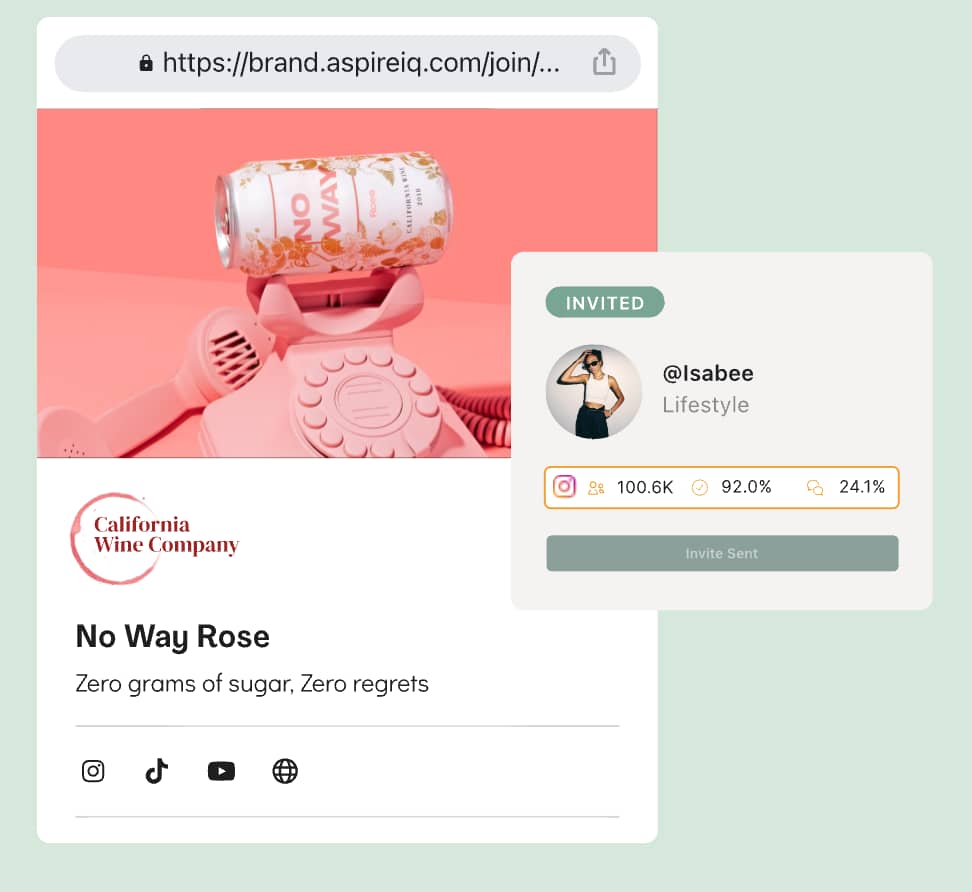
Key features:
- Apply AI-powered search to identify relevant influencers.
- Use the campaign management tool for brief creation and communication.
- Get performance analytics reports to monitor campaign success.
- Use the centralized content library for all campaign content.
- Facilitate teamwork between brands and influencers with collaboration tools.
11. Meltwater
Meltwater provides data-driven influencer insights through advanced analytics. It helps brands spot the right influencers, keep tabs on their campaign performance and make informed decisions based on real-time data.
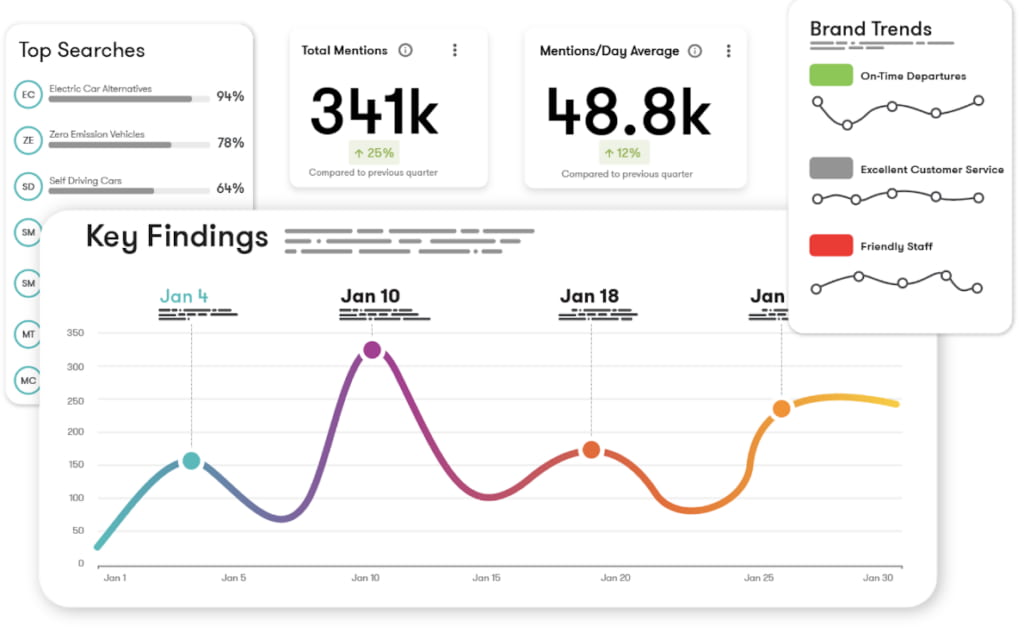
Key features:
- Find influencers based on various criteria.
- Get insights into influencer audience demographics.
- Track campaigns to monitor performance and engagement.
- Obtain competitor analysis insights into competitors’ influencer strategies.
- Use customizable reports to analyze campaign effectiveness.
12. Influencity
Influencity is an influencer analytics tool that provides detailed influencer analytics and insights. It helps brands discover and analyze influencers, manage campaigns and track the effectiveness of their influencer marketing efforts.
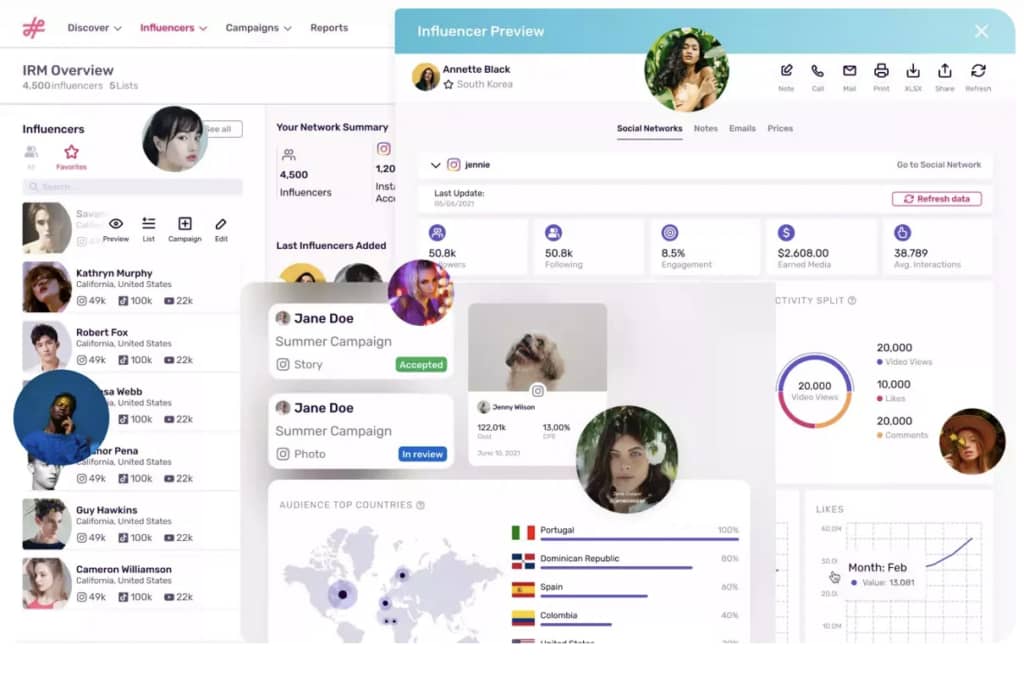
Key features:
- Use the Influencer database with influencers across different social platforms to find the right partner.
- Get insights into influencer audiences.
- Plan, operate and track influencer campaigns.
- Assess performance metrics to measure campaign success.
- Monitor competitor’s influencer marketing activities with deep insights.
What to look for in influencer analytics tools
Influencer data analytics isn’t just about a creator’s engagement rate. To find the right influencers and optimize future campaigns, you need comprehensive platform capabilities.
Essential features to evaluate:
- Influencer discovery: Access to a wide database with audience demographic filters
- Influencer vetting: Careful analysis of influencer’s authenticity and brand alignment
- Campaign tracking: Real-time performance monitoring and attribution
- Trend analysis: Social listening and competitive intelligence
- ROI measurement: Conversion tracking and business impact metrics
- Integration capabilities: Connections to your existing marketing stack
Influencer discovery
The influencer you choose can make or break your campaign. Big audiences and high engagement rates don’t guarantee success—it’s all about finding an engaging audience that fits your ideal customer profile (ICP). That’s why influencer discovery features are so important.
Your influencer analytics tool should have a database of vetted influencers you can filter and search through. It should also have analytics profiles with historic content performance and audience demographics for each influencer.
With Sprout, find the best influencers for your campaign with our social intelligence engine signals. It monitors trends, influencer data and competitor strategies so you can spot your industry’s key creators and trends and take strategic action before the competition.
Influencer vetting:
Effective influencer vetting involves carefully analyzing an influencer’s authenticity. Brands should look for an unusually low engagement-to-follower ratio, which can be a red flag for fake followers. A sudden, unnatural spike in follower count is another sign of an inauthentic audience. Spotting these issues ensures partnerships drive genuine results, not just inflated numbers.
The tools should allow you to leverage AI-powered influencer vetting, similar to Sprout Social, that offers a proprietary Brand Fit Score to assess alignment with your brand’s values. Its Brand Safety reporting flags content that may pose a risk. By providing detailed engagement metrics and topic-led discovery, the platform helps you identify and avoid partnerships with inauthentic accounts.
Campaign tracking and monitoring
Reviewing influencer campaign performance can be a headache, especially when you have to request performance data directly from each influencer and hope you get accurate results. Influencer analytics tools should get rid of that burden and streamline the campaign performance reporting process.
Look for a tool that consolidates accurate, relevant analytics for all your influencer marketing campaigns into a single dashboard, so you can dissect campaign performance on a per-influencer and per-post basis. You’ll need access to advanced metrics like reach, impressions, engagement, clicks, conversions and audience insights. Plus, TikTok-specific metrics like average watch time and views for each influencer’s sponsored and organic content.
Another essential: enhanced link tracking. This is how you’ll measure the concrete impact of your influencer campaigns. Like how Sprout links campaign performance with Google Analytics so you can analyze link clicks, total new users and other conversion metrics at the post level.
Influencer marketing trend analysis
Social media users expect brands to read the room. Industry conversations, social media trends, current events and even brand sentiment can impact the success of your campaign.
Your influencer analytics tool should help you stay in-the-know so you can make informed decisions about your campaign messaging and brand positioning.
For example, Sprout’s Social Listening tools provide insight into critical use cases, including industry trends, product share of voice and event discovery.
Competitor analysis
Studying your competitor’s influencer marketing strategy is a bit like observing your older sibling. You learn to do what they did, but better. You also learn what to avoid at all costs. The best influencer analytics tools recognize the value of social media competitive analysis.
Look for a tool with competitor metrics so you can study your competitors’ influencer marketing strategy and optimize your campaigns accordingly.
Maximizing influencer ROI
Influencer marketing delivers measurable ROI when executed strategically. The brands seeing the highest returns use data to make informed decisions rather than relying on guesswork.
Influencer analytics tools help you strategically maximize influencer ROI. They use precise audience targeting, influencer insights and performance metrics to help you pick influencers that align with your brand and campaign objective.
They also provide creative content insights that show what type of content will perform best for your target audience. When you know what creative direction will work best, you set your influencers up for success.
Pricing considerations for influencer analytics tools
The price tag on an influencer analytics tool is never the full story. To understand the true cost, you have to look beyond the monthly subscription fee.
Consider these total investment factors:
- Per-user licensing: Monthly fees multiply quickly as your team grows
- Premium features: Advanced analytics, API access, and white-label reporting often cost extra
- Implementation costs: Setup, training, and data migration require time and resources
- Integration expenses: Connecting with your existing CRM, analytics, and e-commerce platforms
Think about scalability. The right tool grows with you. Choosing a platform that supports your future needs prevents the costly process of migrating to a new system when you outgrow a basic one.
How to align analytics tools with your marketing goals
An analytics tool without a strategy is just a dashboard of disconnected numbers. To drive real results, you must align your tool’s capabilities with your marketing goals from day one.
The process is straightforward. Start with your business objective. Define your campaign goal. Then, select the key performance indicators (KPIs) that measure success for that specific goal.
For example, if your objective is to increase revenue, your campaign goal might be to drive sales for a new product. You’ll use your analytics tool to track conversions from unique influencer discount codes and click-through rates on product links. This alignment transforms data into decisions and proves your team’s value.
Influencer analytics tool in action
Care to Beauty’s manual spreadsheet-based system for managing a global influencer program was a significant hurdle. Lacking a centralized analytics platform, the team couldn’t effectively track campaigns or gain unified, quantifiable insights, which made it impossible to prove the return on investment (ROI) of their efforts.
How Sprout Helped
Sprout Social provided a comprehensive solution that transformed Care to Beauty’s workflow into a data-driven process. The platform’s analytics features allowed them to:
- Track Performance: By using unique trackable links, the team could directly attribute sales and conversions to specific influencers and campaigns, moving beyond qualitative measures to a solid, data-backed approach.
- Streamline Vetting: The robust data and filtering capabilities of the platform enabled them to reduce the time spent analyzing influencer profiles by 75%. This efficiency in vetting helped them quickly identify authentic and high-performing partners.
- Measure Impact: Sprout’s analytics provided the concrete evidence needed to secure more budget for influencer marketing, proving its value as a genuine growth channel.
With the help of Sprout’s influencer analytics, Care to Beauty achieved a 10x increase in influencer-attributed sales during a key sales period. These quantifiable results validated their strategy and provided the insights needed for long-term planning and growth.
Create winning campaigns with the right influencer analytics tools
Using data through influencer analytics tools is key to maximizing the impact of your campaigns. These tools offer valuable insights that help you identify the right influencers for your brand, and use data to make informed decisions and achieve sustainable growth.
As influencer marketing evolves, having advanced tools like Sprout helps you stay ahead of trends, connect with your target audience and get measurable outcomes. You can source niche influencers, create engaging content and seamlessly integrate influencer marketing into your overall social strategy. Plus, you’re able to prove your social ROI and the impact on your brand to leadership teams for greater executive buy-in.
Ready to take your influencer strategy to the next level? Schedule a demo to see how Sprout Social Influencer Marketing can help you.


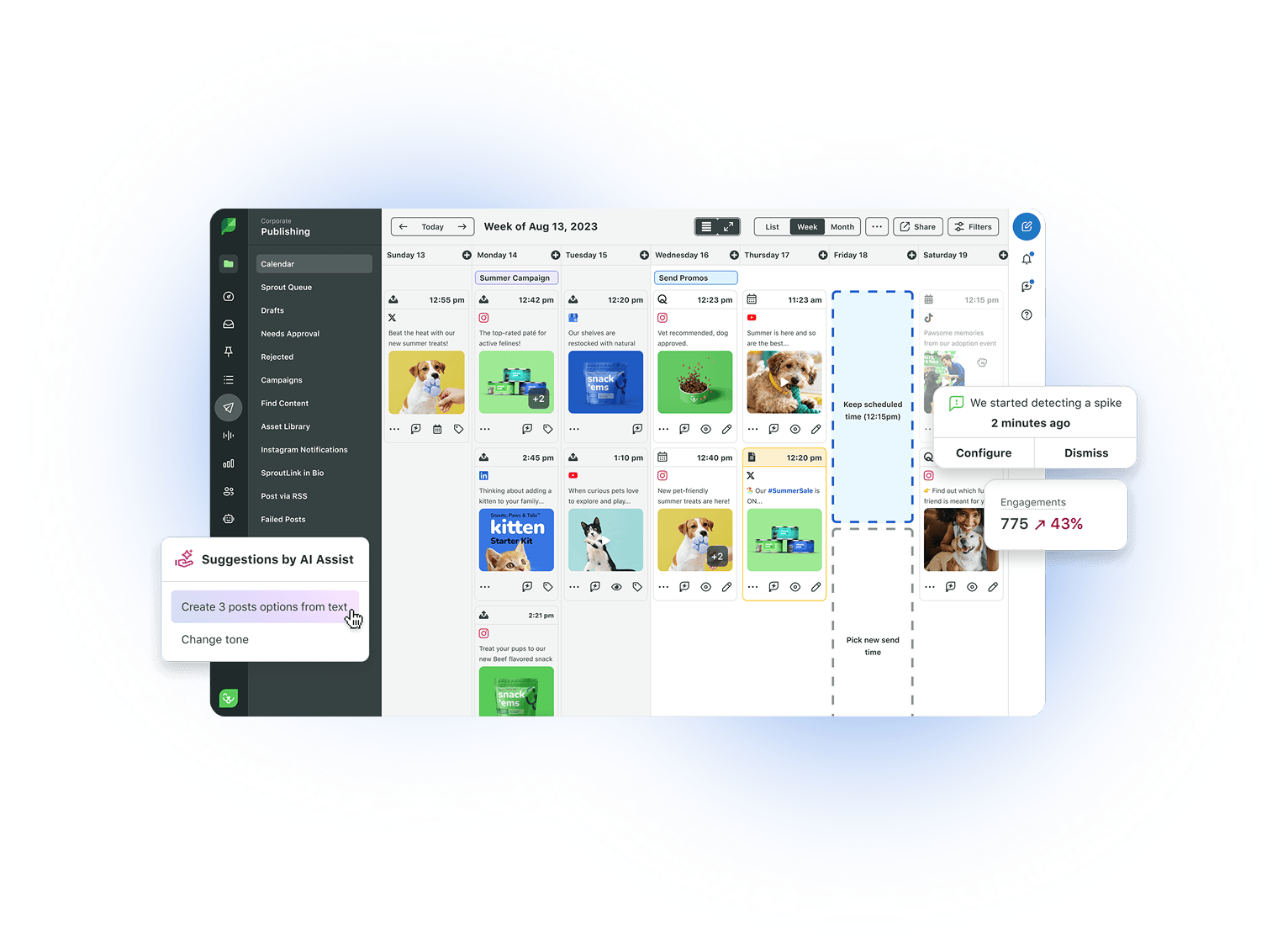
Share